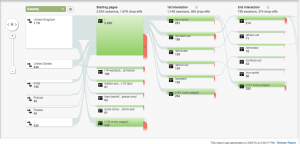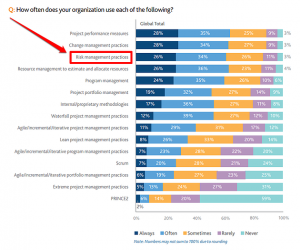We participate in coalitions and teamwork to succeed, so technologists need to identify and foster interdepartmental collaborations to excel.
Managing marketing technology doesn’t happen in a vacuum. As a hybrid specialty spanning both technical and business realms, practitioners interact with multiple departments other than marketing and IT during their routine work.
It’s important to note the type of martech role a person fulfills will influence their interdepartmental interactions; in fact, this was a prominent discussion topic during the birds of feather session I moderated during Discover MarTech 2020. A maestro will likely interact a lot with IT, legal, and procurement as they orchestrate internal processes. Marketers will likely interact with PR and legal as they focus on external audiences. Makers can team up with IT and product management to build and augment tools and processes. Depending upon the type of organization, modelers likely work with departments that process data; for instance, in higher education, institutional research is a great partner since its responsibility is to house and analyze data collected throughout the organization. Marketing technologists should evaluate their specific role to determine which departments are productive collaborators.
Further, a martech practitioner may report to the marketing or IT department. My guess is that most report to marketing, but there’s certainly a chance that some report to IT. Regardless, the interactions between marketing and IT are key to the specialty.
On the marketing side, this department is responsible for determining how martech supports business factors like lead generation, budget justification, strategic alignment, and tactics. In order to do this, it must determine the metrics a tech investment is measured by as well as tracking those metrics. From the project and change management perspectives, a senior member of the department takes on active ownership and sponsorship roles to ensure a stack component gets the necessary priority, attention, and resources.
On the IT side, a lot of emphasis is placed on the systems. Integrating systems so that they communicate smoothly with each other is a critical part of this, but there are other responsibilities IT likely takes – unless there’s a shadow IT or vendor-managed setup. For instance, IT will certainly help determine and manage data privacy issues to ensure that any data marketing collects remains secure to safeguard customer trust and brand reputation. This department should also take the lead on Business Continuity (BC) and Disaster Recovery (DR) planning. BC relates to what would happen if a key person is suddenly unavailable or a vendor rapidly goes out of business while DR focuses on what would happen if a natural or man-made disaster takes out critical company infrastructure. This planning requires documenting processes, systems, dependencies, rank of importance, key people, and similar factors.
Martech practitioners – like most of their counterparts – interact with legal a lot. A very common interaction is to evaluate and negotiate contracts along with procurement; let’s leave it to them to read all of that dense language. However, there are many other opportunities for martech practitioners and legal to interact. For instance, with privacy and security regulations growing more stringent, there are a lot of murky waters that are full of issues with no clear choices. Thus, this means that there’s a lot of risk management, and legal is great at helping evaluate that – especially, as they can ensure that decisions remain within the entire organization’s risk tolerance.
Another crucial department that martech practitioners interact with is product management. At times, product management can fall under IT or another department, but sometimes it stands alone. Martech practitioners can work with this department to find novel ways to market the product. Perhaps a product lends itself well to a virtual or augmented reality presentation. The product team may serve as a great source for developing white papers or presenting webinars for lead generation efforts. Marketing can certainly collaborate with the product team by providing customer feedback and traits that can spark new feature ideas and prioritize backlog tasks. These two departments could also team up for some wacky promotional stunts – like Burger King’s Whooper Detour campaign in which people using a new version of its mobile app could order a Whooper for a penny if they were really close to a McDonald’s location.
Public Relations/Public Affairs is another department that has some potential benefit for martech practitioners to interact with. For instance, social media is an important channel for both marketing and PR, and martech practitioners can help identify utilities that meet the needs of both parties. Further, PR produced content (press releases, fact sheets, infographics, video, and audio) can certainly help with SEO and content strategy efforts, and technical tools can certainly boost that effort. Martech practitioners can play a key role in facilitating discussions about tactics, metrics, and division of responsibilities.
Martech practitioners participate in coalitions, and teamwork is key. In order to succeed, technologists need to identify and foster interdepartmental collaborations to excel.
Opinions expressed in this article are those of the guest author and not necessarily Marketing Land. Staff authors are listed here.
Marketing Land – Internet Marketing News, Strategies & Tips
(26)







